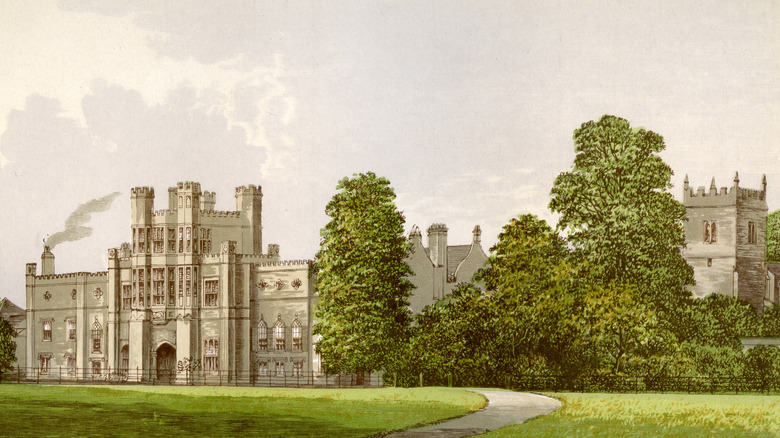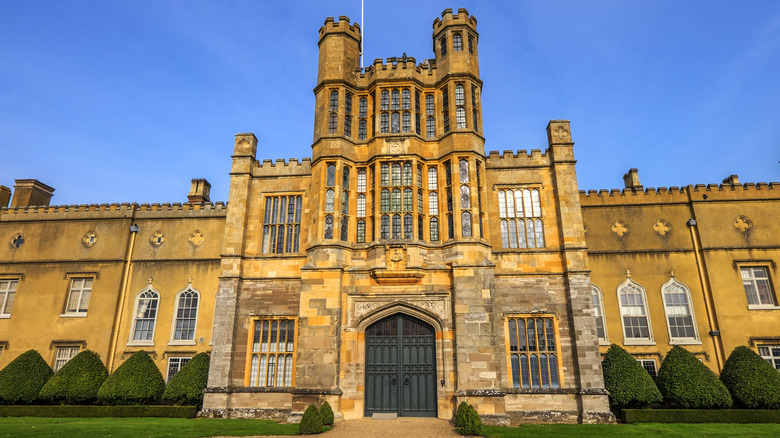The Truth About The Secret Room In Coughton Court
Coughton Court, a grand British estate, has been the home of the Throckmorton family since 1409. The Throckmortons are one of the oldest Catholic families in the country, and their faith has shaped their home, leading to some unusual design changes. They had a secret room built into the tower of the gatehouse because of religious persecution.
In the 1500s, England went through several religious upheavals depending on who was sitting on the throne. King Henry VIII broke away from the Catholic Church and set up the Church of England (via Historic UK). When Queen Mary took over, she made the country Catholic again and punished those who held onto Protestant beliefs. Her vicious persecution of Protestants earned her the nickname "Bloody Mary." When Elizabeth I became queen, she revived the Church of England. Elizabeth faced tremendous opposition from Catholics and became the target of numerous plots to overthrow her in favor of her cousin, Mary, the queen of Scotland. Jesuit priests were even brought to England to stop the change in religion, and they stayed with Catholic families pretending to be a relative or an employee.
Elizabeth I sought to root out these priests and to stop all Catholic attempts at staging a coup. She ordered severe punishments for Catholic priests and for anyone who helped a priest. In fact, they were even people who acted as priest hunters and scoured the country to find these clergymen.
A hiding place known as a priest hole
The Throckmortons, devout Catholics, were one of the many families who hid priests in their house. They used the secret room as a hiding place known as a priest hole, and theirs had an especially clever design. Built into a gatehouse turret, the priest hole actually had a second area below it that could only be accessed by a trap door. According to Live Science, this set-up is called a double-blind construction. This construction is intended to fake out those searching for a priest and make them think no one was there. Meanwhile, a priest was safely tucked away in the second space.
Nicholas Owen, a Jesuit priest, is believed to be the creator of this clever hiding place in Coughton Court. He designed and built numerous priest holes across England, helping to protect fellow priests from arrest (via Franciscan Media). Owen reportedly also helped spring two Jesuits from the Tower of London, a fortress that also served as a notorious prison. Owen was captured twice himself, and, despite being tortured, he never gave up the names of other Catholics. Owen died in jail in 1606.
The priest hole at Coughton Court was forgotten for more than a century. Rediscovered in 1858, it wasn't fully explored until 1910. Inside they found an altar, bedding, and a rope ladder. The house, now part of the National Trust, is open to the public, so visitors can take a peek into the priest hole for themselves.

